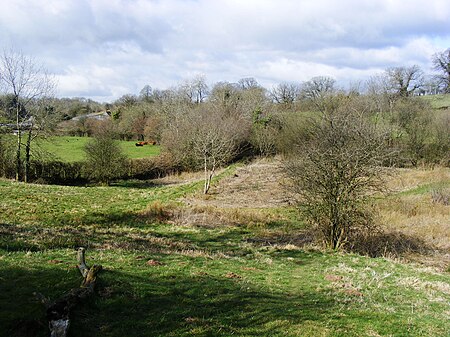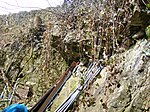Windsor Hill Marsh
Sites of Special Scientific Interest in SomersetSites of Special Scientific Interest notified in 1972Use British English from January 2014

Windsor Hill Marsh (grid reference ST619454) is a 0.84 hectare biological Site of Special Scientific Interest, north of the town of Shepton Mallet in Somerset, and adjacent to the Windsor Hill Quarry geological Site of Special Scientific Interest. It was notified in January 1972. Windsor Hill Marsh is a marshy silted pond, with adjacent damp, slightly acidic grassland. Adjoining the marsh are a limestone bank, and a short stream which flows into a swallet.
Excerpt from the Wikipedia article Windsor Hill Marsh (License: CC BY-SA 3.0, Authors, Images).Windsor Hill Marsh
Windsor Hill Lane, Mendip
Geographical coordinates (GPS) Address Nearby Places Show on map
Geographical coordinates (GPS)
| Latitude | Longitude |
|---|---|
| N 51.20653 ° | E -2.54676 ° |
Address
Windsor Hill Lane
Windsor Hill Lane
BA4 4JP Mendip
England, United Kingdom
Open on Google Maps








